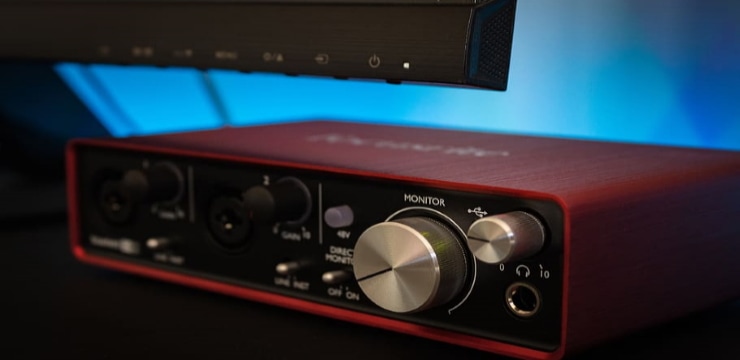The first and most popular option when recording electric drums is to use a MIDI. Electronic Drums are a great alternative to acoustic kits as you can easily record their sound without any hassles (it's also easy to find the best cheap electronic drum sets that work for your budget). The main issue lies in figuring out which way is best to record the electronic drums on a PC. There are a couple of options available that allow you to do so.
Some of these are easy and inexpensive, like using an iRig connection or using a USB for example. On the other hand, some are expensive and more complex to set up. Whatever the case, each has its own pros and cons. On the bright side, you don’t have to choose one or the other.
In fact, most experts recommend that you use a combination of two methods to allow for more freedom. For instance, you can use a combination of an audio interface along with a MIDI connection.
Read ahead to find out how to record electronic drums on a PC.
Contents
The first option is using a Musical Instrument Digital Interface (or MIDI) to record. It may not be the cheapest option on the market, but it’s not overly expensive either. The MIDI allows you to capture all the notes directly from the drum pads and the cymbals. Recording with a MIDI grants you the flexibility to rework the track and make changes to it later.
For this, we recommend that you check your drum module. If your module includes a USB type module, then simply use a USB A to USB B type connector. On the other hand, if it includes a standard MIDI output, then you might need to buy a MIDI to USB interface. Examples include Addictive Drums, EZdrummer, and Toontrack.

In case your drums are not equipped with a MIDI module, you can opt for an audio interface. This method is generally more expensive but it also yields better results. Most drum kits feature audio outputs that you can use to record live performances.
Generally, an audio interface transmits the output from your kit to a digital signal which your computer then reads. The computer easily records the signals with this method. Furthermore, they use a USB connection to connect to your computer. They are also quite easy to install.
We recommend that you only buy an interface that is compatible with your computer system.
Check the connections on your drum modules and buy audio cables accordingly. Generally, you could need TS or TRS cables depending on your output modules.
Both methods have their own advantages and drawbacks. Mostly, we recommend that the Direct Audio Output; it is the best option if you’re recording for personal practice. The audio interface allows you to easily record your sound without any hassles.
On the other hand, if you want a more comprehensive sound that you can tweak later, then the MIDI way is the best way. Personally, we recommend that you combine both of these options together to allow the highest degree of freedom.
Overall, recording your electric drums through your computer is an easy task if you have an interface or a MIDI connector. In the end, it comes down to what you need and how much work you’re willing to put into the process.
Copyright © 2024 MSpot. All rights reserved. Privacy Policy & Cookie Disclaimer.
mspot.com is a participant in the Amazon Services LLC Associates Program, an affiliate advertising program designed to provide a means for sites to earn advertising fees by advertising and linking to Amazon.com. As an Amazon Associate, we earn from qualifying purchases.